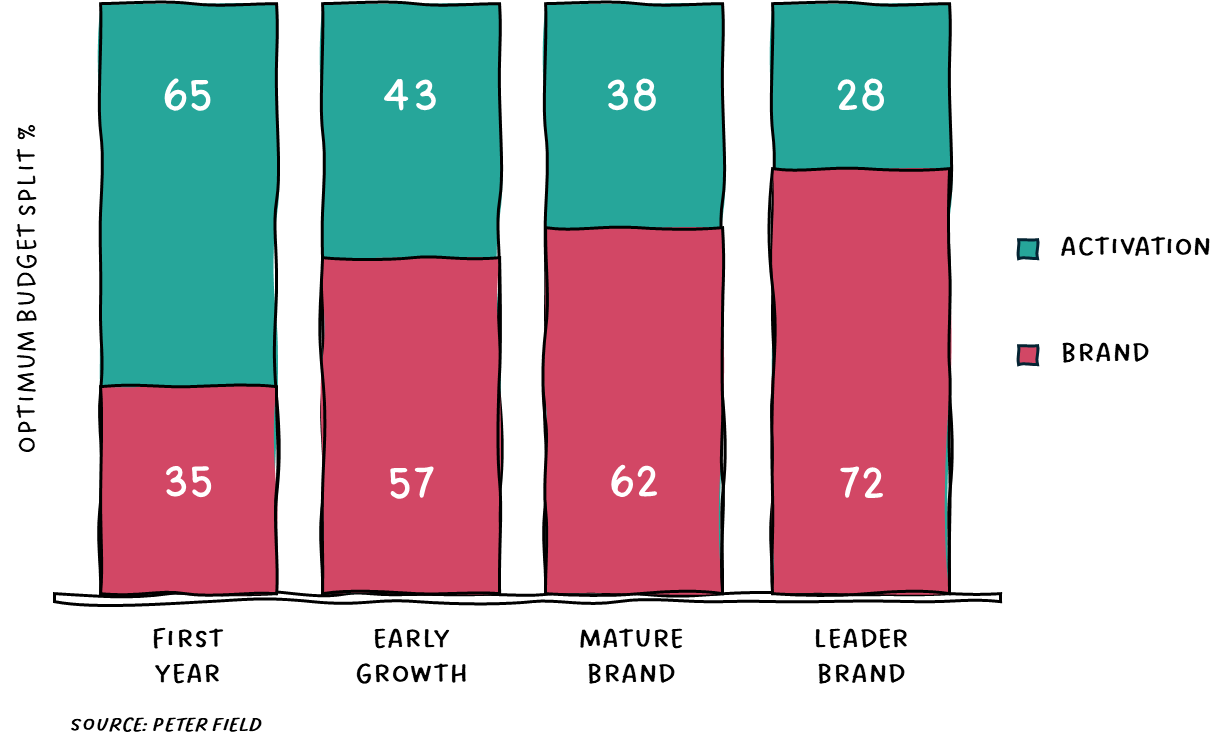I’m on a crusade to rehabilitate ‘wastage’, a term which I think is both unfair and short-sighted. Now on the face of it, that probably sounds slightly mad – after all, isn’t one of the main benefits of digital marketing our ability to target our audience more precisely and make sure that every penny is invested in activity which will drive the bottom line? But what if this hyper-focus on efficiency is actually to the detriment of effectiveness?

Short-termism is inherent in the idea of wastage
For a long time, digital marketing has been positioned as efficient and precise, and Finance have loved this because they’ve been able to put a nice, neat ROI figure against marketing spend in monthly reports and slash budgets that they can frame as ‘wastage’.
But the dual criteria of efficiency and precision presupposes that there is a clear target both in terms of audience and conversions over a relatively short time scale. This inevitably puts an equally short timeframe on measurement so that you can say meaningfully whether the activity has been a success or not, again narrowing the definition of ‘success’. Now I’m not suggesting that there’s no merit in holding marketing more accountable, particularly when it comes to the impact on the business’ bottom line, but this short-termism leads to over-tactification and, ultimately, diminishing returns.
The whole point of marketing is to attract new audiences to your brand but it’s also well-established that marketing to everyone is akin to marketing to no one. That’s why clear segmentation is so crucial to success. However, the idea of wastage is underpinned by the idea that it’s not really a question of who might buy from you, but more one of who definitely doesn’t, and that’s almost impossible.
For example, Pregnacare sell supplements for pregnant women and their babies, so it’s a totally irrelevant product for me and therefore you could argue that any marketing which targets me would be wasted. Except that’s not the case at all, because it was a brand I already knew and therefore the first thing I went out to buy when we first found out my wife was pregnant. And the same could be said for the likes of Clinique, Tampax and ghd – I definitely wouldn’t use these products but I might very well buy them for someone else.
Growth happens on the periphery
The point I’m making here is that people aren’t that predictable. Their behaviour is dynamic and other factors (both internal and external) come into play, so why do we put on this charade that audiences can be neatly split into potential customers and definitely nots? In truth, the boundaries are blurred and adjacent audiences are where you can tap into the incremental opportunities which are blocked off by the idea of wastage.
Granted this is an anecdotal example, but my wife and I recently bought a pet camera from a brand we saw advertised a couple of times on social media. Not so interesting, apart from the fact that we don’t actually own a pet – and therefore targeting us on social media ought to have been the epitome of wastage. However, by focusing on the problem the product solves (being able to see and hear what’s going on when you’re not physically in the room), they reached a new audience who have the same problem in a different context: namely, parents of a newborn who also have a 5-year old.
Overly tight (but highly rational) targeting which said that only pet owners would buy a pet camera would have excluded us from this advertising, and therefore missed a growth opportunity. But being a bit wrong at the edges, especially in a saturated or commoditised market, lets you learn what works outside your core. You can then get better at targeting those people in the right places, and at the right time.
Why is this important?
Your marketing strategy should balance the long and short term
Ultimately, the notion of wastage highlights a tension between short-term activation and long-term brand-building. From an efficiency perspective, you could argue that my wife and I shouldn’t have been targeted with those pet camera ads, and their sheer luck that we bought one for a different purpose shouldn’t encourage them to do more of the same. However, an effectiveness approach would counter that, even if we hadn’t bought then, the ads began to build mental availability in adjacent audiences which would ultimately bring long-term growth.

The work of Binet and Field suggests that this might actually be a false dichotomy, that you can have the long and the short of it if you strive for balance in your marketing strategy. It’s better to speak to more people, but some of them are irrelevant, than miss out on speaking to everyone who could be relevant. Of course, you need to make sure that’s not at the expense of sales and profitability now – but thankfully they’ve even modelled out what your approximate split should be based on where you are as a brand.
As ever with these things, the key is in setting a clear strategy which balances your short and long term objectives. Failure to do so will inevitably either lead to poor performance now, or stagnating sales in the future.

